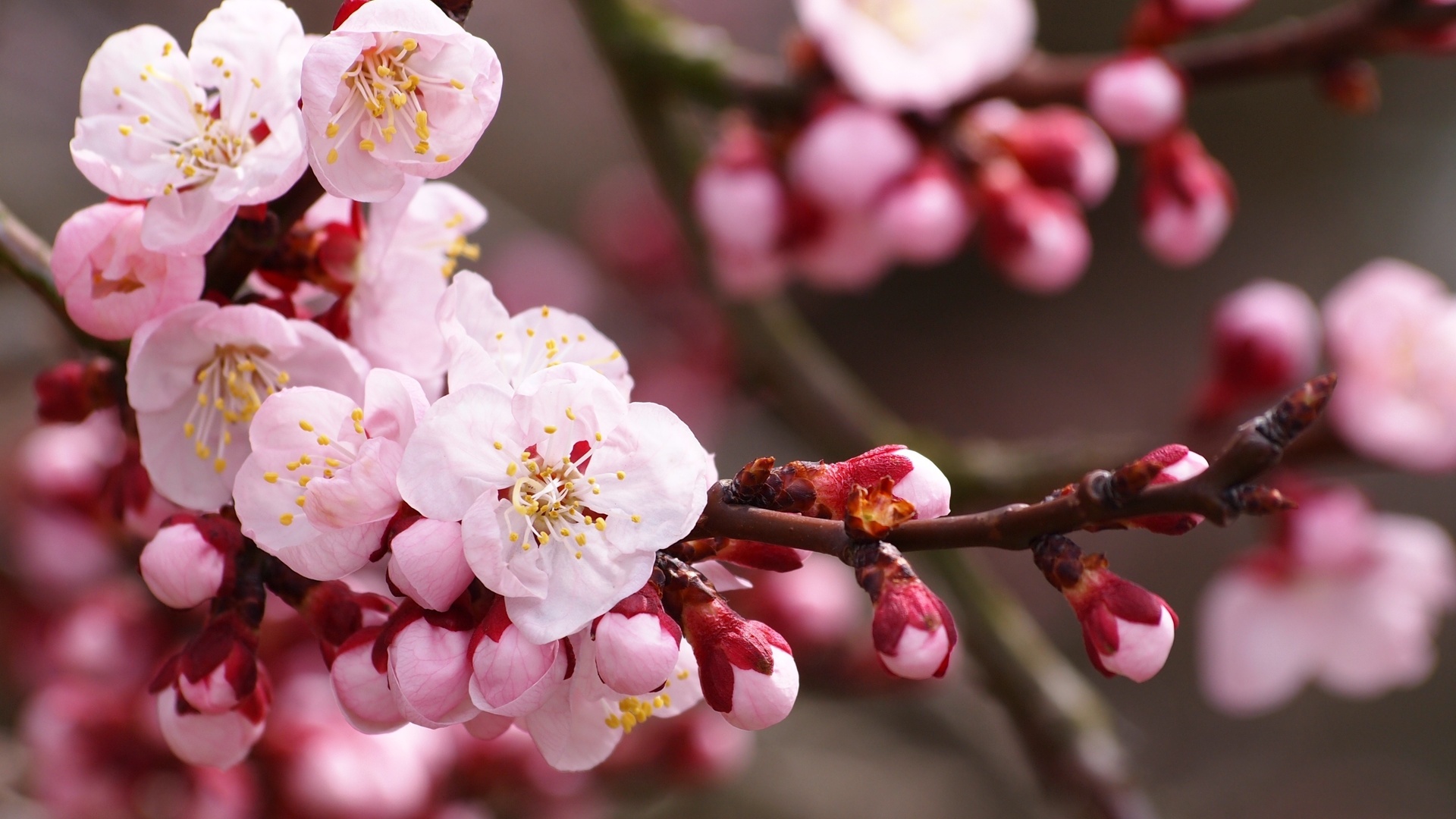09月22日, 2014 105次
tell sb. (not) to do sth.告诉某人(不要)做某事e5a48de588b67a686964616f31333332393439 want sb. to do sth.想要某人做某事 try to do sth.试图做某事 help sb. (to) do sth.帮某人做某事 be busy with sth.忙于某事 spend money/time on(doing) sth.花费金钱/时间去做某事 hope to do sth./hope(that)…希望…… wish sb. to do sth.希望某人做某事 find sb. doing sth.发现某人正在做某事 remember to do sth.记得要去做某事 remember doing sth.记得曾经做过某事 forget to do sth.忘记要去做某事 forget doing sth.忘记曾经做过某事 plan to do sth.计划做某事 take sb. some time/money to do sth.做某事花费某人时间/金钱 sb. pay(s) money for sth.某人在某物上花费金钱 sth. cost(s) sb. some money某人在某物上花费金钱 like to do/doing sth.喜欢做某事 see/hear sb. do/doing sth.看见/听到某人干过/在干某事 decide to do sth.决定做某事 get sth. for sb.为某人弄到某物 would like to do sth 想要做某事 enjoy doing sth 享受做某事 practice doing sth 练习做某事 try to do sth 尽力做某事 try doing sth 尝试做某事 ask sb to do sth 要求某人做某事 make sb do sth 使得某人做某事 let sb do sth 让某人做某事 help sb (to)do sth 帮助某人做某事 love/like doing sth 喜欢做某事 dislike doing sth 不喜欢做某事 hate doing/to do sth 讨厌做某事 keep doing sth 保持一直做某事 be busy doing sth 忙于做某事 spend(time)doing sth 花时间做某事 mind doing sth 介意做某事 need to do sth 需要做某事 本回答由提问者推荐
一、保证课本内的单词、句型、词组会背会默。二、熟悉课文。【课文里有许多句型应用】三、上册的主要句型有:there be【注意将来时是there is going to be 或there will be。注意与have的区别,就近原则】一般现在时【注意三单e799bee5baa6e79fa5e98193e4b893e5b19e31333264623166、频率副词的位置,有频率副词的否定和疑问句】like的用法【like doing 】五种提出邀请的方法:would you like to do/some sth. 、shall we、what about/how about、why not、let’s…shall we。上网干什么。go onlin 、piay games等【注意名词不能单独存在】四、积累词组。如:would you please do 、would please not do、you’d better do 、you’d better not do 五、各种词名词不能单独存在。形容词修饰名词,副词修饰形容词、动词,各种介词的用法,动词注意时态、三单、有没有情态动词、like等,数词注意序数词:twelve变为twelfth、twenty变为twentith,注意可数名词和不可数名词。

七年级上册英语语法 1.动词be(is,am,are)的用法 我(I)用am, 你(you)用are,is跟着他(he),她(she),它(it)。单数名词用is,复数名词全用are。变否定,更容易,be后not加上去。变疑问,往前提,句末问号莫丢弃。还有一条须注意,句首大写莫忘记。 2.this,that和it用法 (1)this和that是指示代词,it是人称代词。 (2)距离说话人近的人或物用this, 距离说话人远的人或物用that。如: This is a flower. 这是一朵花。(近处) That is a tree. 那是一棵树。(远处) (3)放在一起的两样东西,先说this, 后说that。如: This is a pen. That is a pencil. 这是一支钢笔。那是一支铅笔。 (4)向别人介绍某人时说This is…, 不说That is…。如: This is Helen. Helen, this is Tom. 这是海伦,海伦,这是汤姆。 (5)This is 不能缩写, 而That is可以缩写。如: This is a bike. That’s a car. 这是一辆自行车。那是一辆轿车。 (6)打电话时,介绍自己用this, 询问对方用that。如: —Hello! Is that Miss Green? 喂,是格林小姐吗? —Yes, this is. Who’s that? 是的,我是,你是谁? 注意:虽然汉语中使用“我”和“你”,但英语中打电话时绝不可以说:I am…, Are you…?/Who are you? (7)在回答this或that作主语的疑问句时, 要用it代替e68a84e8a2ad7a6431333264623236this或that。如: ①—Is this a notebook? 这是笔记本吗? —Yes, it is. 是的,它是。 ②—What’s that? 那是什么? —It’s a kite. 是只风筝。 3.these和those用法 this, that, these和those是指示代词,these是this的复数形式,指时间,距离较近的或下面要提到的人或事;those是that的复数形式,指时间、距离较远或前面已经提到过的人或事物。 ①This is my bed. That is Lily’s bed. 这是我的床。那是莉莉的床。 ②These pictures are good. 这些画很好。 ③ Are those apple trees? 那些是苹果树吗? 在回答主语是these或those的疑问句时,通常用they代替these或those以避免重复。如: ④Are these/those your apples? 这些(那些)是你的苹果吗? Yes, they are. 是的,他们是。 4.名词+’s所有格 单数名词后直接加 “ ’s ”: Jim’s coat 吉姆的外套 Jeff’s mother杰夫的妈妈 以s结尾的复数名词,只加“ ’” Teachers’ Day教师节 the twins’ books双胞胎的书 不以s结尾的不规则的名词复数,加“ ’s ” Children’s Day 儿童节 men’s shoes男式鞋
每年的书都貌似不一样 基于帮忙的话 最好是买一本语法书 然后 根据课本上的排版把语法书中相关知识点 掌握 联系一下 应该就可以了 也可以在百度文库中查一下 本回答被网友采纳
一.动词be(is,am,are)的用法我(I)用am, 你(you)用are,is跟着他(he),她(she),它(it)。单数名词用is,复数名词全用are。变否定,更容易,be后not加上去。变疑问,往前提,句末问号莫丢弃。还有一条须注意,句首大写莫忘记。二.this,that和it用法(1)this和that是指示代词,it是人称代词。(2)距离说话人近的人或物用this, 距离说话人远的人或物用that。如:This is a flower. 这是一朵花。(近处)That is a tree. 那是一棵树。(远处)(3)放在一起的两样东西,先说this, 后说that。如:This is a pen. That is a pencil. 这是一支钢笔。那是一支铅笔。(4)向别人介绍某人时说This is…, 不说That is…。如:This is Helen. Helen, this is Tom. 这是海伦,海伦,这是汤姆。(5)This is 不能缩写, 而That is可以缩写。如:This is a bike. That’s a car. 这是一辆自行车。那是一辆轿车。(6)打电话时,介绍自己用this, 询问对方用that。如:—Hello! Is that Miss Green? 喂,是格林小姐吗?—Yes, this is. Who’s that? 是的,我是,你是谁?注意:虽然汉语中使用“我”和“你”,但英语中打电话时绝不可以说:I am…, Are you…?/Who are you?(7)在回答this或that作主语的疑问句时, 要用it代替this或that。如:①—Is this a notebook? 这是笔记本吗?—Yes, it is. 是的,它是。②—What’s that? 那是什么?—It’s a kite. 是只风筝。三.these和those用法this, that, these和those是指示代词,these是this的复数形式,指时间,距离较近的或下面要提到的人或事;those是that的复数形式,指时间、距离较远或前面已经提到过的人或事物。①This is my bed. That is Lily’s bed. 这是我的床。那是莉莉的床。②These pictures are good. 那些画很好。③ Are those apple trees? 那些是苹果树吗?在回答主语是these或those的疑问句时,通常用they代替these或those以避免重复。如:④Are these/those your apples? 这些(那些)是你的苹果吗?Yes, they are. 是的,他们是。四.不定冠词a和ana和an都是不定冠词,表示一(个,支,本,块……)的意思,但不强调数量概念,而是强调类别,用来限定名词。a用在辅音素开头的单数名词前,如:a pencil(一支铅笔),a book(一本书);an用在元音音素开头的名词前,如an eraser(一块橡皮)。如果名词前有修饰语,用a还是用an,则以该修饰语的第一音素决定用a还是用an。如:a clock 一座钟 an old clock 一座旧钟 a book 一本书 an English book 一本英语书a nice apple 一个可爱的苹果 an apple 一个苹果五.名词+’s所有格名词+’s所有格 单数名词后直接加 “ ’s ”Jim’s coat 吉姆的外套 Jeff’s mother杰夫的妈妈 以s结尾的复数名词,只加“’”Teachers’ Day教师节 the twins’ books双胞胎的书 不以s结尾的不规则的名词复数,加“ ’s ”Children’s Day 儿童节 men’s shoes男式鞋 表示两者共同拥有时,只在最后一个名词后加’s表示两者各自拥有时,要在每个名词后加’sLucy and Lily’s mother 露茜和莉莉的妈妈(共同的妈妈,一个妈妈)Lucy’s and Kate’s rooms 露茜和凯特的房间(各自的房间,两间房子)六.There be句型(1)There be句型主要用以表达“某处(某时)有某人(某物)。”其基本结构为“There be+某物(某人)+某地(某时)”其中there是引导词,没有词义;主语是be后面的名词, be是谓语动词,在一般现在时中be只用is和are两种形式。下面这首歌诀可帮你巧记there be句型结构:There be放句首,主语跟在后。地、时放句末,强调置前头。如:There is a book on the desk.有时为了强调地点,也可把介词短语放在句首。如:On the desk there is a book.(2)There be句型中的be动词如何确定呢?请先看看下面这首歌诀:Be动词,有三个,am,is还有are。“There be”真特别,不留am只留俩,那就是is还有are。要用is还是are,须看其后的名词是单数还是复数。若是单数或不可数名词用is,否则就用are。如:①There is a tree behind the house.②There is some water(水)in the bottle(瓶子).③There are some pears in the box.(3)注意:如果“be”后的主语是由and连接的两个或两个以上的名词,那么be的形式要遵循“远亲不如近邻”的原则。也就是说,“be”的形式是由与它最近的那个名词来确定的。若那个名词是单数或不可数名词要用is,是复数就用are。如:①There is a book and some pens on the floor.②There are some pens and a book on the floor.七.like一词的用法like用作及物动词,译为“喜欢”。(1)后接名词或代词,表示喜欢某人或某物。如:I like the baby very much. 我非常喜欢这个小孩。(2)后接动名词(v. -ing),表示“喜欢做某事”,着重于习惯、爱好。如:Tom likes playing football. 汤姆喜欢踢足球。(3)后接动词不定式(to do ),表示“偶尔地喜欢做某事”,着重于某次具体的行为。如:I like reading, but I like to watch TV this evening. 我喜欢读书,但我今晚想看电视。八.一般现在时一般现在时表示经常性、习惯性的动作,或表示现在的特征、状态。当主语是非第三人称单数时,行为动词的一般现在时变化形式(见下表)。如: 句式 结构 例句肯定句 主语+行为动词原形+7a686964616f31333262343062其他 We speak Chinese.否定句 主语+don’t+行为动词原形+其他 We don’t speak Chinese.一般疑问句 Do+主语+行为动词原形+其他? Do you speak Chinese?肯定回答否定回答 Yes,主语+doNo,主语+don’t Yes, we do.No, we don’t.当主语是第三人称单数时,行为动词一般现在时的句型变化如下:(1)肯定句在行为动词原形后+s/es(其构成方法与名词单数变复数相同)。(2)否定句用助动词doesn’t+动词原形。(3)一般疑问句则是把助动词does放在句首,后面动词用原形,回答时,肯定用“Yes,主语+does.”;否定用“No,主语+doesn’t.”。 句式 结构 例句肯定句 主语+行为动词s/es+其他 She speaks Chinese.否定句 主语+doesn’t+行为动词原形+其他 She doesn’t speak Chinese.一般疑问句 Does+主语+行为动词原形+其他? Does she speak Chinese?肯定回答否定回答 Yes,主语+doesNo,主语+doesn’t Yes, she does.No, she doesn’t.九.句子单数变复数,注意以下五要素(1)主格人称代词要变成相应的复数主格人称代词,即I→we, you→you,she,he,it→ they。如:She is a girl. →They are girls.(2)am,is要变为are。如:I’m a student. →We are students.(3)不定冠词a,an要去掉。如:He is a boy. →They are boys.(4)普通单数名词要变为复数形式。如:It is an apple. →They are apples.(5)指示代词this,that要变为these,those。如:This is a box. →These are boxes.十.英语日期的表示法英语中月份和星期名称都是专有名词,它们的首字母必须大写,并且前面无需用冠词。用英语表示日期,其顺序为月+日+年,日和年之间需用逗号隔开。如:August 2nd,2003(2003年8月2日)。也可以用日+月+年来表示。如:10th May,2003(2003年5月10日)英语日期前介词的使用:若指在哪一年或哪一月,则用介词in,若具体到某一天,则需用介词on。①She was born in 1989 ②She was born in August. ③She was born in August 1989.④She was born on 2nd August, 1989.十一.名词复数:在英语里面,名词分可数名词(countable noun)和不可数名词(uncountable noun),不可数名词没有单复数之分,用时只当单数词用;可数名词有单复数之分,一个的前面要用a或an,eg: a pencil, a basketball, a dictionary, an egg, an ID card,而复数即两个或两个以上的要作相应的变化,情况如下:(1) 特殊词,特殊变化,需单独记:child→children,man→men,foot→feet,woman→womentooth→teeth,sheep→sheep,deer→deer(2)一般的词在单数词后直接+“s”:book→books,pen→pens,car→cars,map→maps,cartoon→cartoons(3)以s,x,sh,ch结尾的词+“es”box→boxes,watch→watches(4)以辅音字母+y结尾的名词去掉“y”,改成“i”,再加“es”family→families,comedy→comedies(5)以f或fe结尾的词,先去掉f或fe,改成“v”再加esknife→knives,wife→wives,handkerchief→handkerchieves十二.时间的表达法(1) 直读式,即直接读出时间数字7: 05 seven five 8:16 eight sixteen(2) 过、差式,即几点差几分,几点过几分。(以30分为分界线)1:25 twenty-five past one 2:30 half past two3:43 seventeen to four 4:38 twenty-two to five(3)12小时制6:00 a.m. 上午6点 8:20 p.m. 下午8点20分(4)24小时制13:00 13点钟 22:15 22点15分(5)15分可用quarter4:15 a quarter past four 5:45 a quarter to six(6)时间前通常用at.at 5 o’clock at 7:30 p.m.十三.关于时间的问法(1)以when提问,“什么时候”可以是较长的时间段,也可以是较短的时间点①When is your birthday? 你的生日是什么时候? ②My birthday is Dec. 29th. 我的生日是12月29日。这里就是指一天的时间段①When do you go home? 你几点回家? ②I go home at 4:30 p.m. 我下午4:30回家.这里when问的是具体的时间。(2)具体几点我们通常用what time提问①What time is it now? 现在几点了? or What’s the time? 几点了?It’s 9:26. 现在九点二十六。②What time is it by your watch? 你手表几点了?It’s 8:36. Oh, It’s 50 minutes late 8:36,哦,它慢了50分钟。③What time do you get up? 你几点起床?I get up at 6:00 a.m. 我早上6点起床。十四. want用法(1)想干什么用want to do sthThey want to join the sports club. 他们想加入运动俱乐部。(2)第三人称单数作主语,want要作变化①He wants to play basketball.②Li Xia wants to play the piano.(3)变疑问句,否定句要借助助动词do或does.①-Do you want to play soccer ball ? -Yes , I do . / No , I don’t.②-Does he want to go home by bus ? -Yes , he does . / No , he doesn’t. 人称代词 主格: I we you she he it they 宾格: me us you her him it them 形容词性物主代词:my our your her his its their 名词性物主代词: mine ours yours hers his its theirs 2.形容词和副词的比较级 (1) 一般在形容词或副词后+er older taller longer stronger, etc (2) 多音节词前+more more interesting, etc. (3) 双写最后一个字母,再+er bigger fatter, etc. (4) 把y变i,再+er heavier, earlier (5) 不规则变化: well-better, much/many-more, etc. 3.可数词的复数形式 Most nouns + s a book –books Nouns ending in a consonant +y - y+ ies a story—stories Nouns ending in s, sh, ch or x + es a glass—glasses a watch-watches Nouns ending in o +s or +es a piano—pianos a mango—mangoes Nouns ending in f or fe - f or fe +ves a knife –knives a shelf-shelves 4.不可数名词(单复数形式不变) bread, rice, water ,juice etc. 5. 缩略形式 I’m = I am you’re = you are she’s = she is he’s = he is it’s = it is who’s =who is can’t =can not isn’t=is not etc 6. a/an a book, a peach an egg an hour 7. Preposition: on, in ,in front of, between, next to, near, beside, at, behind. 表示时间: at six o’clock, at Christmas, at breakfast on Monday on 15th July On National Day in the evening in December in winter 8. 基数词和序数词 one – first two-second twenty-twentieth 9. Some /any I have some toys in my bedroom. Do you have any brothers or sisters? 10. be 动词 (1) Basic form: am/are/is (2) 肯定和否定句 I am(not) from London. My eyes are(not) small. My hair is(not) long. (3)一般疑问句: Am I a Chniese? Yes, you are. No, you aren’t. Are they American? Yes, they are. No, they aren’t. Is the cat fat? Yes, it is. No, it isn’t. 11. there be 结构 肯定句: There is a … There are … 一般疑问句:Is there …? Yes, there is./ No, there isn’t. Are there…? Yes, there are. /No, there aren’t. 否定句: There isn’t …. There aren’t…. 12. 祈使句 Sit down please Don’t sit down, please. 13. 现在进行时.通常用“now”. 形式: be + verb +ing eg: I am(not) doing my homework. You/We/They are(not) reading. He/She/It is(not) eating. 动词 —ing 的形式 Most verbs +ing walk—walking Verbs ending in e -e + ing come—coming Short verbs ending in a vowel + a consonant run –running swim—swimming 14 一般现在时。通常用 “usually, often, every day, sometimes”。 形式: 肯定句: I go to school on foot every day. She goes to school on foot every day.
1. 名词 名词可以分为专有名词(Proper Nouns)和普通名词 (Common Nouns),专有名词是某个(些)人,地方,机构等专有的名称,如Beijing,China等。普通名词是一类人或东西或是一个抽象概念的名词,如:book,sadness等。普通名词又可分为下面四类: 1)个体名词(Individual Nouns):表示某类人或东西中的个体,如:gun。 2)集体名词(Collective Nouns):表示若干个个体组成的集合体,如:family。 3)物质名词(Material Nouns):表示无法分为个体的实物,如:air。 4)抽象名词(Abstract Nouns):表示动作、状态、品质、感情等抽象概念,如:work。个体名词和集体名词可以用数目来计算,称为可数名词(Countable Nouns),物质名词和抽象名词一般无法用数目计算,称为不可数名词(Uncountable Nouns)。归纳一下,名词的分类可以下图表示:_______________________________________ | |专有名词 | | | 名 | | 个体名词 | | | | | | 可数名词 | | | | 集体名词 | | | |普通名词 | | | | 词 | | 物质名词 | | | | | | 不可数名词| | | | 抽象名词 | |一般现在时的用法 1) 经常性或习惯性的动作,常与表示频腮度的时间状语连用。 时间状语: every…, sometimes, at…, on Sunday I leave home for school at 7 every morning.2) 客观真理,客观存在,科学事实。 The earth moves around the sun. Shanghai lies in the east of China.3) 表示格言或警句中。 Pride goes before a fall. 骄者必败。 注意:此用法如果出现在宾语从句中,即使主句是过去时,从句谓语也要用一般现在时。例:Columbus proved that the earth is round..4) 现在时刻的状态、能力、性格、个性。 I don't want so much. Ann Wang writes good English but does not speak well.比较:Now I put the sugar in the cup. I am doing my homework now. 第一句用一般现在时,用于操作演示或指导说明的示范性动作,表示言行的瞬间动作。再如:Now watch me, I switch on the current and stand back. 第二句中的now是进行时的标志,表示正在进行的动作的客观状况,所以后句用一般现在时。 名词复数的规则变化 ___________________________________________________ 情况 构成方法 读音 例词__________________________________________________一般情况 加 -s 1.清辅音后读/s/; map-maps 2.浊辅音和元音后 bag-bags 读 /z/; car-cars___________________________________________________ 以s,sh,ch,x等结尾的词 加 -es 读 /iz/ bus-buses watch-watches___________________________________________________以ce,se,ze,(d)ge等结尾的词 加 -s 读 /iz/ license-licenses___________________________________________________以辅音字母+y 变y 为i结尾的词 再加es 读 /z/ baby---babies___________________________________________________ 人称代词的用法 1)人称代词的主格在句子中作主语或主语补语,例如: John waited a while but eventually he went home. 约翰等了一会儿,最后他回家了。 John hoped the passenger would be Mary and indeed it was she. 约翰希望那位乘客是玛丽,还真是她。说明:在复合句中,如果主句和从句主语相同,代词主语要用在从句中,名词主语用在主句中,例如: When he arrived, John went straight to the bank. 约翰一到就直接去银行了。2)人称代词的宾格在句子中作宾语或介词宾语,但在口语中也能作主语补语,第一人称在省略句中,还可以作主语,例如: I saw her with them, at least, I thought it was her. 我看到她和他们在一起,至少我认为是她。(her做宾e69da5e6ba90e799bee5baa6e79fa5e9819331333239313539 语,them做介词宾语,her做主语补语) a. -- Who broke the vase? --谁打碎了花瓶? b. -- Me. --我。(me做主语补语= It's me.)说明:在上面两例句中,her和me分别作主语补语。现代英语中多用宾格,在正式文体中这里应为she和I。 名词的格 在英语中有些名词可以加"'s"来表示所有关系,带这种词尾的名词形式称为该名词的所有格,如:a teacher's book。名词所有格的规则如下: 1) 单数名词词尾加"'s",复数名词词尾没有s,也要加"'s",如the boy's bag 男孩的书包,men's room 男厕所。 2) 若名词已有复数词尾-s ,只加"'",如:the workers' struggle 工人的斗争。 3) 凡不能加"'s"的名词,都可以用"名词+of +名词"的结构来表示所有关系,如:the title of the song 歌的名字。 4) 在表示店铺或教堂的名字或某人的家时,名词所有格的后面常常不出现它所修饰的名词,如:the barber's 理发店。 5) 如果两个名词并列,并且分别有's,则表示"分别有";只有一个's,则表示'共有'。 如:John's and Mary's room(两间) John and Mary's room(一间) 6) 复合名词或短语,'s 加在最后一个词的词尾。 如:a month or two's absence
到这来个链接自下zhidao载www.jsjjx.com/ktgl/upfile/200922320729161.doc
上辅导班

从基础上来说可以背一背单词和课文,如果有词组总百结的话,最好全背下来,没有可以到度书店里买初中英语词组总结大全。在难一点的话,做练习册。如果你都干完问了,你就背一背课外的单词,对你的阅读理解和完形答填空有很专大的帮助哦!平时可以看看英语小故事(书店有卖),看看英语电影,听听英文歌都不错,都会有帮助。属
每天抽一定的时间专心看英语书,自己写英文作文,然后请人帮你看看有没有语病,这样子单词,词组,句子都有复习到,。说到底,学习英语不是要背单词和词组,而是要你能正确的用英语交流。
专心看英语书
可以到21世纪教育网上去下载 追问 谢谢 本回答被提问者采纳